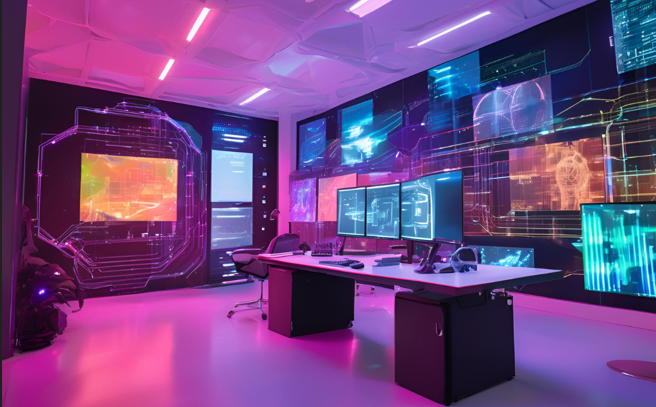Revolution in programming: How vibe coding is transforming the startup landscape
In a world increasingly powered by artificial intelligence (AI), a new trend is taking hold – “vibe coding.” This innovative approach, driven by large language models (LLMs), is redefining how startups build their products. Could this mark the twilight of traditional coding as we know it?
What Is vibe coding?
Andrej Karpathy, a prominent AI expert, frames “vibe coding” as a shift where programming leans more toward art than craft. Rather than hand-writing lines of code, developers define a product’s vision – what it should achieve and why – and let AI take over. Language models, like those powering ChatGPT or Cursor, turn rough ideas into working code. Picture this: “I want an app that suggests lunch based on my fridge contents” – and in moments, you’ve got a prototype.
This is a paradigm shift. Programmers morph into directors, setting the vision while AI handles the technical heavy lifting. For startups, development timelines shrink from weeks to days; for non-coders, it’s an entryway into creation without years of training.
Why Is vibe coding raising
Startups, particularly those in accelerators like Y Combinator, are jumping on board. A founder from YC’s latest cohort put it succinctly: “The software engineer’s role is evolving into that of a product engineer. Taste and intuition now trump raw coding skills.” This is transformative – instead of toiling over debugging or functions, founders strategize, then tweak AI-generated code.
Speed fuels this shift. Startups thrive on agility – testing concepts, refining them, and capturing users fast. Vibe coding cuts that cycle from weeks to days, sometimes hours. It also opens doors for visionaries without technical degrees: articulate a goal, and the tech often delivers.
Tools driving the shift
Vibe coding owes its rise to powerful tools. Cursor stands out, favored by startups for its intuitive design and rapid code output. WindSurf gains ground with its ability to auto-index codebases, easing large project management. Models like Coan and DeepSeek earn praise for debugging and reasoning, though they still need human guidance.
These platforms are more than tools – they’re co-creators, drafting code, proposing fixes, and adapting to context, redefining programming as a partnership.
“Hey AI, scan my fridge and make me lunch”
Kevin Roose, a New York Times journalist and coding novice, explored vibe coding by crafting small apps he called “software for one” – AI-generated tools tailored to personal needs. One scanned his fridge to suggest lunch ingredients. Roose found that while vibe coding empowers amateurs, the output can be shaky and error-prone. In one case, AI conjured fake e-commerce reviews. His verdict? It’s ideal for hobby projects, not mission-critical tasks. Yet he marveled that AI lets a solo creator build what once demanded an engineering team.
The growing buzz around vibe coding
The trend’s traction is clear. In March 2025, Y Combinator revealed that 25% of its Winter 2025 batch startups had codebases 95% AI-generated – a testament to vibe coding’s rise. YC founders emphasized: “It’s less about technical precision, more about product intuition.” This fuels rapid prototyping and market responsiveness.
In February 2025, Business Insider labeled “vibe coding” Silicon Valley’s latest buzzword, underscoring its ascent. It shifts founders’ focus – reviewing and refining code rather than writing it – freeing time for iteration.
Pros and cons of vibe coding
Like any revolution, vibe coding offers rewards and risks.
Advantages:
- Speed: Code emerges in a fraction of traditional timelines – vital for startups vying for market share.
- Efficiency: Less coding time means more focus on strategy and product vision.
- Creative Freedom: It unlocks ideas too intricate for conventional methods.
Challenges:
- AI Reliance: Errors in generated code can slip by without human scrutiny.
- Less Control: Ceding details to AI sacrifices precision, often requiring fixes.
- Tool Dependency: Weaker models yield weaker results – quality varies by tech.
Skills for the vibe coding era
Vibe coding reshapes what developers and founders need:
- Product Vision: Clearly stating your intent – AI can’t guess what you don’t define.
- Taste and Intuition: Sensing what clicks with users is now core to the role.
- Code Oversight: Debugging and reasoning remain human tasks – AI isn’t perfect.
This fusion of soft and technical skills reimagines the programmer’s craft.
The future of coding?
Vibe coding isn’t a fleeting hype – it’s a preview of a future where AI collaborates in tech creation. For startups, it means faster prototypes, leaner development, and bolder innovation. Traditional coding endures, shifting toward complex systems, while vibe coding dominates quick, iterative work.
Sources:







